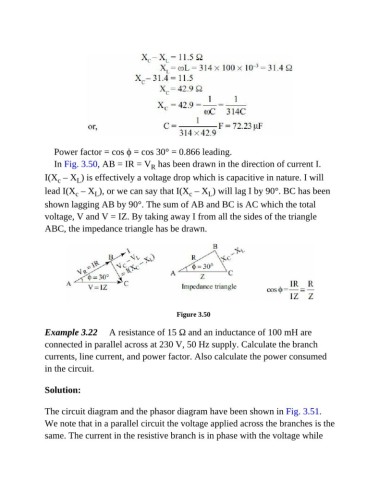Page 360 - Basic Electrical Engineering
P. 360
Power factor = cos ϕ = cos 30° = 0.866 leading.
In Fig. 3.50, AB = IR = V has been drawn in the direction of current I.
R
I(X – X ) is effectively a voltage drop which is capacitive in nature. I will
L
c
lead I(X – X ), or we can say that I(X – X ) will lag I by 90°. BC has been
c
L
c
L
shown lagging AB by 90°. The sum of AB and BC is AC which the total
voltage, V and V = IZ. By taking away I from all the sides of the triangle
ABC, the impedance triangle has be drawn.
Figure 3.50
Example 3.22 A resistance of 15 Ω and an inductance of 100 mH are
connected in parallel across at 230 V, 50 Hz supply. Calculate the branch
currents, line current, and power factor. Also calculate the power consumed
in the circuit.
Solution:
The circuit diagram and the phasor diagram have been shown in Fig. 3.51.
We note that in a parallel circuit the voltage applied across the branches is the
same. The current in the resistive branch is in phase with the voltage while

